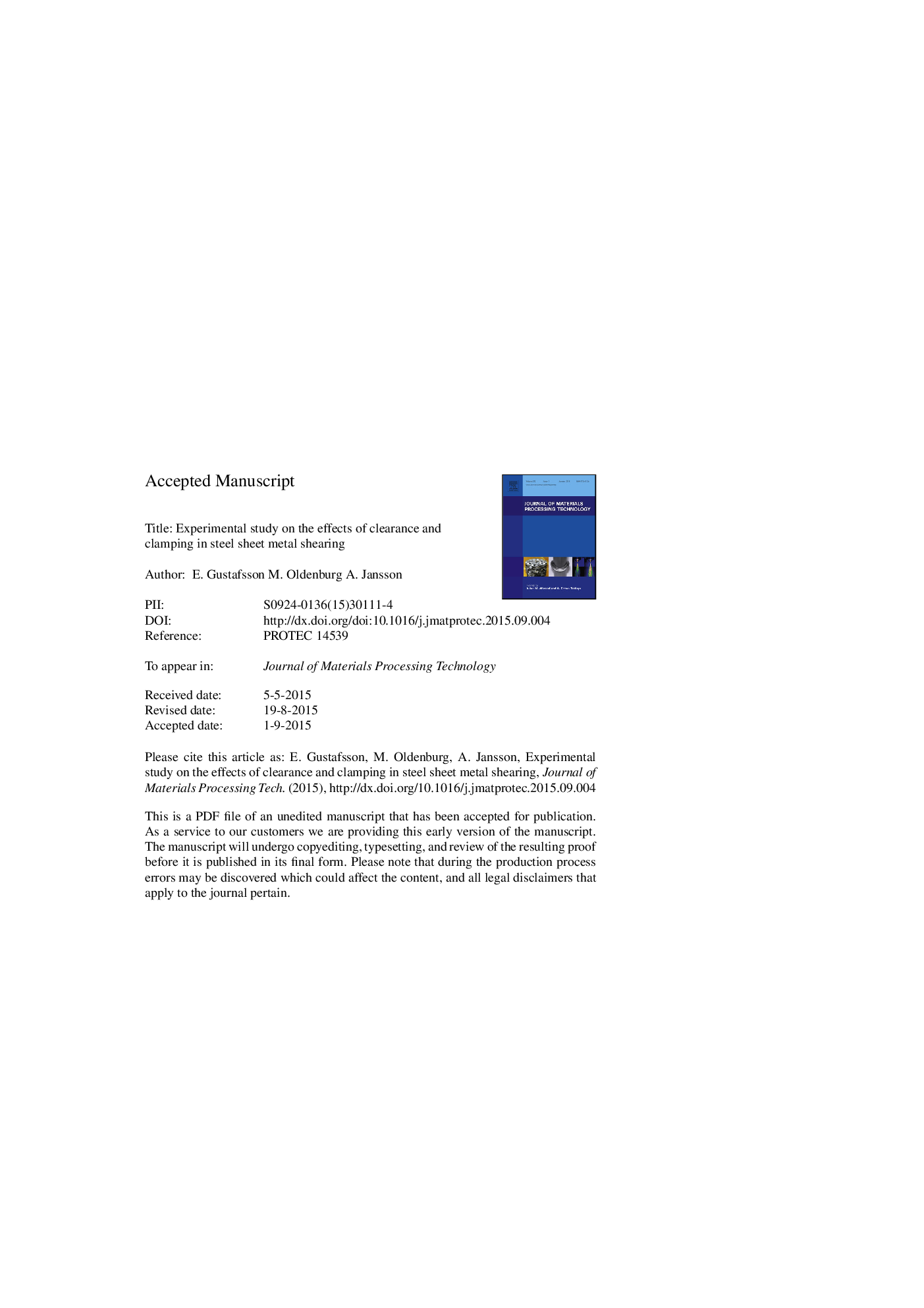| Article ID | Journal | Published Year | Pages | File Type |
|---|---|---|---|---|
| 7176803 | Journal of Materials Processing Technology | 2016 | 18 Pages |
Abstract
Shear cutting is common within several sheet metal industry processing steps, e.g. in cut to length lines, slitting lines, end cropping. Shearing is fast and cheap relative to competing cutting methods like laser and plasma cutting, but involves large forces on the equipment that increase with increased sheet material strength. Accurate shear experiments are a prerequisite to increase the knowledge of shearing parameters, improve industrial shearing, and provide data for validation of numerical shear models. Here, the two shear parameters clearance and clamp configuration, identified as important to the shear results, were studied in an experimental set-up with well defined tool movement and high measurability of tool position and force. In addition to force measurements, the sheared edge geometry was characterized. Steels of low, medium, and high strength were selected for the study. Throughout the experimental study, the shear tool penetration before fracture decreased with increased material strength. The required shear force decreased and the force attempting to separate the two shear tools increased when one side of the sheet was left unclamped and free to move. Further, the maximum shear force increased with decreased clearance. Clearance changes were small and moreover continuously measured during all shear experiments.
Related Topics
Physical Sciences and Engineering
Engineering
Industrial and Manufacturing Engineering
Authors
E. Gustafsson, M. Oldenburg, A. Jansson,
